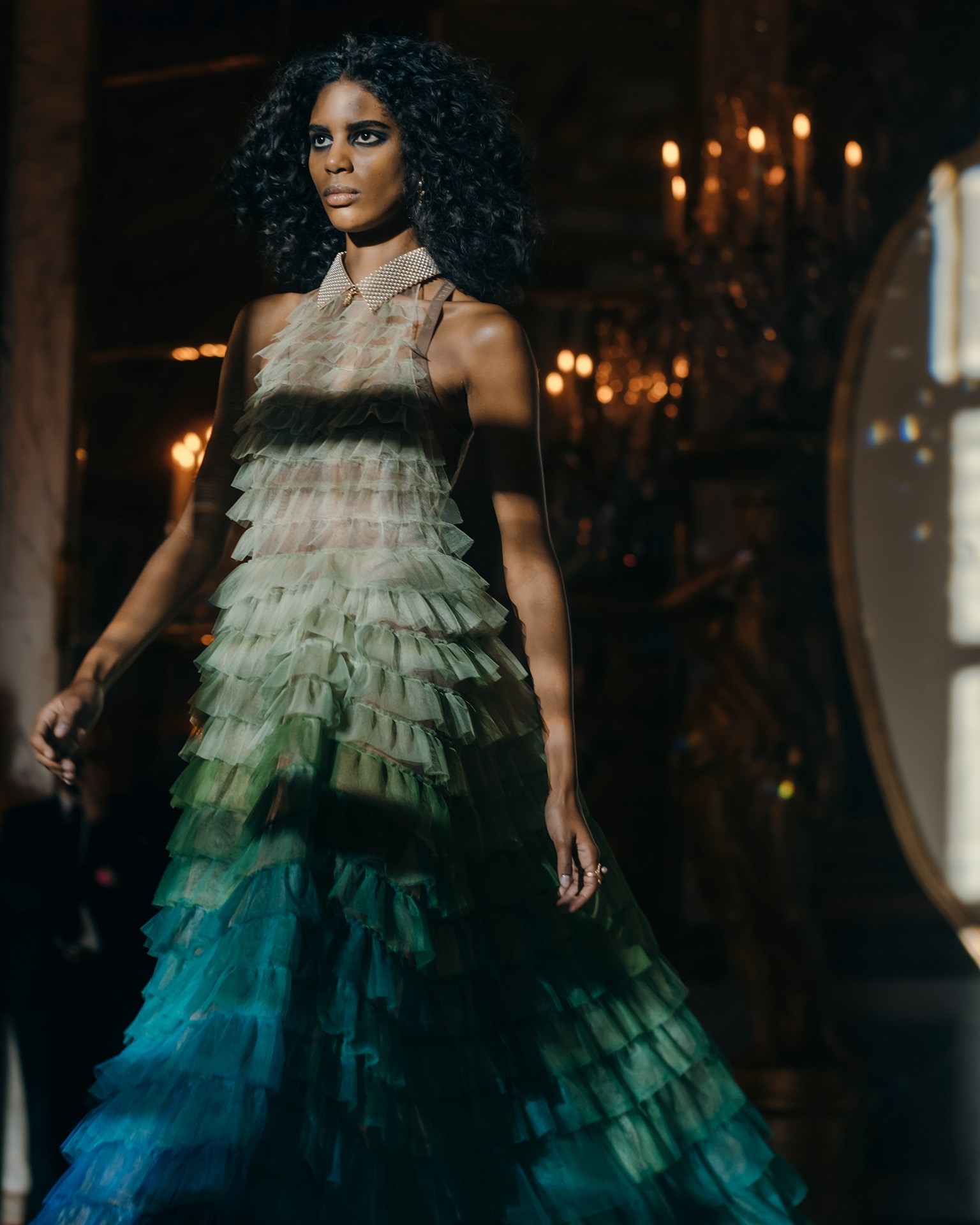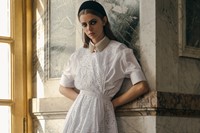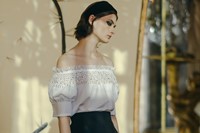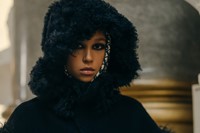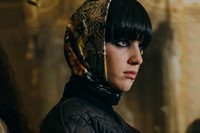Maria Grazia Chiuri didn’t plan to show her latest Dior ready-to-wear collection on International Women’s Day – despite how well it fits the narrative she has built at that esteemed house, investigating and celebrating a different type of femininity than that which first made Dior world-famous. During the ongoing lockdowns of the Covid-19 pandemic, it seems nothing is certain: until three weeks before, she had intended to show her collection to a live audience, which first became impossible. Then technical difficulties delayed the unveiling of the film created in its place, shot in the hallowed, baroque Galerie des Glaces – Hall of Mirrors – of the Palace of Versailles – instead of Dior’s usual early slot in Paris fashion week, it was pushed back. Meaning it coincided with a day coded with meaning, chiming with Chiuri’s feminine and feminist modus operandi at Dior.
Versailles is, perhaps, an usual venue given that focus: it was, of course, established as the absolute monarch’s seat of power by Louis XIV in the 17th century, and the Hall of Mirrors was the ultimate triumphant display of his power, wealth and influence. Yet, in a post-show interview, Chiuri outlined how she was intrigued by the stories of the women behind Versailles – their stories as women, and also the stories they wrote. It was in Versailles that both the word and idea of the “fairytale” originated, the word invented by Baroness Marie Catherine d’Aulnoy, one of many aristocratic French female writers termed conteuses, or storytellers. The Baroness’ fairytales were first published in 1690 – 122 years before the Brothers Grimm. From the same period emerged one of the most famous and enduring: La Belle et la Bête, typical of the output of that coterie of women, through its emphasis on female agency and bravery. “Many of the fairytales that we know today come from women who wrote them, in the 17th century, in Versailles,” Chiuri stated – unravelling the inspiration behind both her collection and her collaboration with the choreographer Sharon Eyal and the artist Silvia Giambrone, who created a sequence of mirrors, like the enchanted looking-glasses of fairytales, that further embellished those already in place in Versailles.
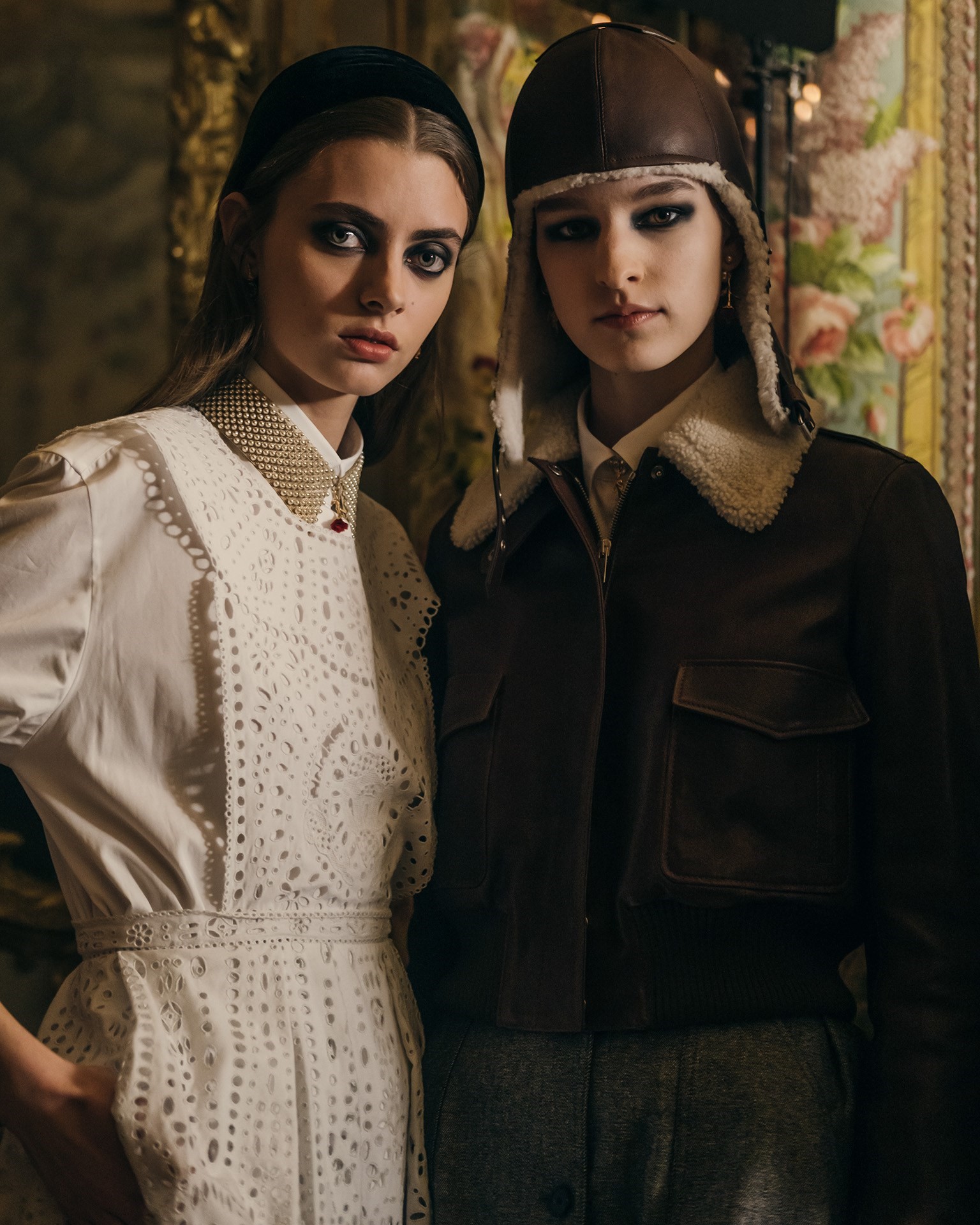
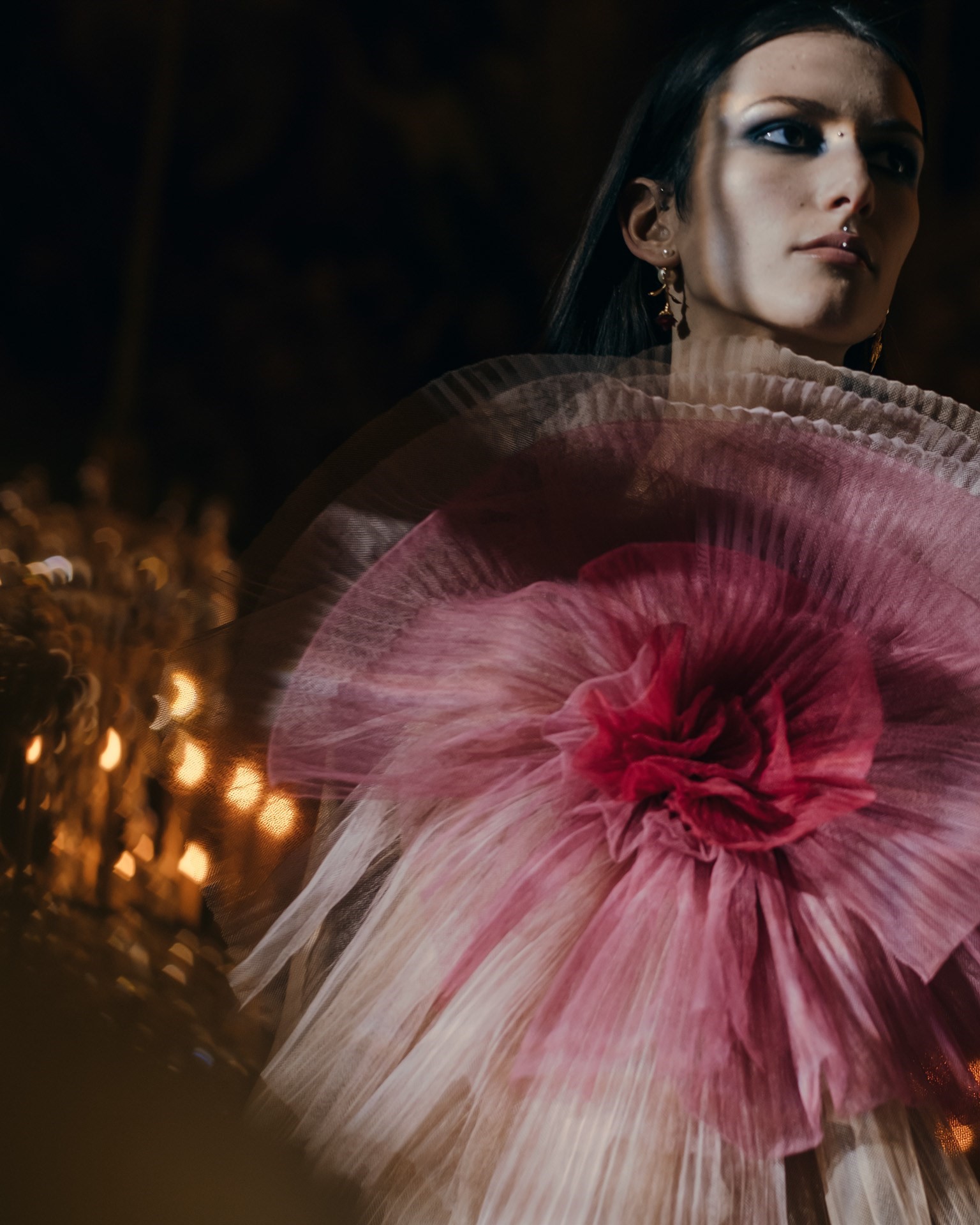
Chiuri’s championing of the women often overlooked by history extended, in this collection, to a collaborator of Dior, Andrée Brossin de Méré. An artist who created fabrics for Dior, collaging unexpected subject matter – pastries, perhaps, or cut-crystal driving glasses – into extraordinary patterns. Her work for Dior is known, by look if not name – from 1948, she created fabric designs for Dior, and his successors Yves Saint Laurent and Marc Bohan, as well as for other houses such as Balenciaga and Givenchy. But her relationship with Dior – whose founder she called a friend – was particularly fruitful and emblematic, largely focussed on their shared love of the natural world, flowers in particular. And what would Dior be without flowers? Chiuri chose to reflect Brossin de Méré’s legacy through a series of prints, the crushed romantically red roses of one recalling both Dior’s own 1956 creation Rose Rose (a day ensemble), and a cocktail dress named Nuit de Grenade from the Spring/Summer 1960 collection by his successor Saint Laurent. Printed using a blurred chiné effect – one beloved by Dior and much used with Brossin de Méré’s designs – these clothes seem less like floral frocks and more like modern feminine camouflage, armour for life ahead. Which, of course, feels apt.
Then again, Chiuri’s whole thrust is to bring women out of their camouflage, from behind the scenes and into the open, celebrating their often overlooked achievements and creativity.
